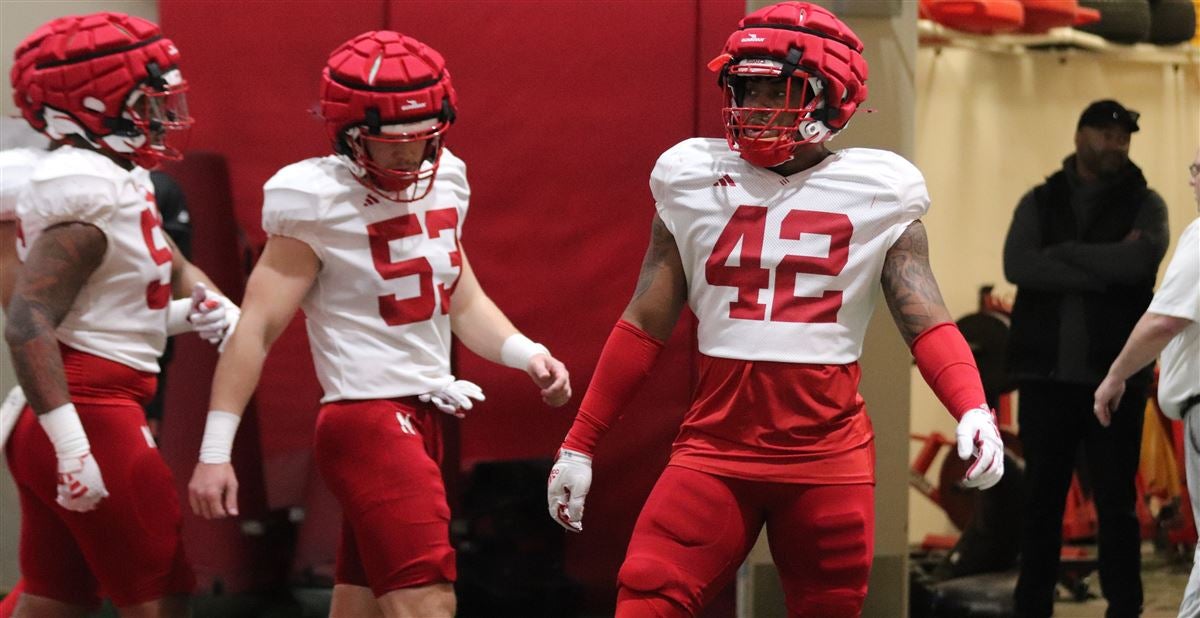Smaller pads are for speed and flexibility. I don't ever see that reverting. Nor do I think it would lessen the problems, other than slowing players down.The idea of going back to larger shoulder pads is very interesting.
-
You do not need to register if you are not going to pay the yearly fee to post. If you register please click here or log in go to "settings" then "my account" then "User Upgrades" and you can renew.
HuskerMax readers can save 50% on Omaha Steaks .
You are using an out of date browser. It may not display this or other websites correctly.
You should upgrade or use an alternative browser.
You should upgrade or use an alternative browser.
Protective Padding Outside the Helmet
- Thread starter BrokenBowTim
- Start date
Well, if you want to continue to play tackle football, maybe it's necessary. The speed of today's athletes is definitely a contributing factor to injuries.Smaller pads are for speed and flexibility. I don't ever see that reverting. Nor do I think it would lessen the problems, other than slowing players down.
I'm DuckTownHusker and I approve this message.
I thought I have seen some NFL guys wearing the extra padded helmets in games. I could be wrong
You aren't wrong. Over a decade ago, a San Fran lineman wore an external pad on his helmet. It is a crumple zone as observed, and also increases surface area of contact. The former slows the rate of deceleration, and the latter spreads the impact mass over a bigger area dispersing the force thus lowering pressure.I thought I have seen some NFL guys wearing the extra padded helmets in games. I could be wrong
It isn't that the brain doesn't slosh, that's a part of its shock absorption. It is allowing the brain to accelerate with the head more readily rather than lag and bump up against its walls.
Speed and size. I said a long time ago. The best QBS today are about the same size as the best in the 60s and 70s. The size of DL and LBs has changed immensely. I read an article in 1999 about how the average lineman of the 60s Packers was about 240. The 70s steelers was similar. Then they showed the average size of the all county team for SanDiego that year. It was like 310. So if you really want to limit injuries. Set minimum and maximum weight standards.Well, if you want to continue to play tackle football, maybe it's necessary. The speed of today's athletes is definitely a contributing factor to injuries.
BTW the new NFL kickoff rule is a good one. It limits full speed contact without taking away the excitement of a potential return..
It's also an entertainment product. People want to see speed. I doubt players or rulemakers will want to regress back to the old style of pads.Well, if you want to continue to play tackle football, maybe it's necessary. The speed of today's athletes is definitely a contributing factor to injuries.
Ultimately, there are a lot of factors:
- We are better at catching head injuries. It used to be players just kept playing with a concussion, or would be pulled out until they came to. No one was tracking those injuries. Now, we are more aware of the long term effects, so even though we might statistically see more head injuries, that is more of a product of awareness.
- Turf fields are another factor in injuries of all types, including head injuries. Places seem to not mind because it is fiscally and aesthetically better.
- Speed is definitely a big factor, but only a portion of that comes from technology advances in equipment. Most of that comes from athletes training to get bigger, faster, stronger. Gone are the days of big lumbering linebackers. Now you have guys who are 6'4" 240 lbs of all muscle running a 4.5-40 yard dash, coming downhill to meet you at the line or across the middle.
If you ever meet a college or pro football player, you immediately can tell that they aren't built like average humans. The amount of muscle these guys pack on, while still saying quick and agile, is incredible. The athletes get better and better. Everyone is bigger. Everyone is stronger. Everyone is faster.Speed and size. I said a long time ago. The best QBS today are about the same size as the best in the 60s and 70s. The size of DL and LBs has changed immensely. I read an article in 1999 about how the average lineman of the 60s Packers was about 240. The 70s steelers was similar. Then they showed the average size of the all county team for SanDiego that year. It was like 310. So if you really want to limit injuries. Set minimum and maximum weight standards.
BTW the new NFL kickoff rule is a good one. It limits full speed contact without taking away the excitement of a potential return..
Football is an organized car crash and those vehicles are getting more and more souped up as time goes on.
Here's my solution: telemetry and trajectory.
Players' wear uniforms embedded with a computer chip The football also has a chip. During a play, each players position on the field and speed is sent, over quantum waves, to a computer programmed with AI. When a defensive player closes in on the ball carrier, AI calculates the odds of a successful tackle based on speed and weight of all players and ends the play (by playing a ref's whistle sound in helmet speakers) or allows it to continue, as appropriate.
Players' wear uniforms embedded with a computer chip The football also has a chip. During a play, each players position on the field and speed is sent, over quantum waves, to a computer programmed with AI. When a defensive player closes in on the ball carrier, AI calculates the odds of a successful tackle based on speed and weight of all players and ends the play (by playing a ref's whistle sound in helmet speakers) or allows it to continue, as appropriate.
- minimizes physical contact, thereby reducing injuries
- eliminates need for referees (yay!) For example:
- accurately determines ball position for line of gain calculations
- instantly detects illegal motion
- always "knows" how many players are on the field
- etc.
Last edited:
That padding decreases head injuries pretty significantly. Rough analogy, but compare injuries in head-on collisions with and without airbags in a car.I’m not sure how outside padding on a helmet helps your brain from sloshing around inside your skull but I bet it cuts down on the number of broken fingers and other injuries/punishment delivered to the defender
If the data supports the efficacy of the external padding, I would be in support of making that the standard, both for practices and games. Protecting players means protecting the game that we love, even if it looks a bit different.
Man you can be talking physics in this room that and big words just confuse us.You aren't wrong. Over a decade ago, a San Fran lineman wore an external pad on his helmet. It is a crumple zone as observed, and also increases surface area of contact. The former slows the rate of deceleration, and the latter spreads the impact mass over a bigger area dispersing the force thus lowering pressure.
It isn't that the brain doesn't slosh, that's a part of its shock absorption. It is allowing the brain to accelerate with the head more readily rather than lag and bump up against its walls.




